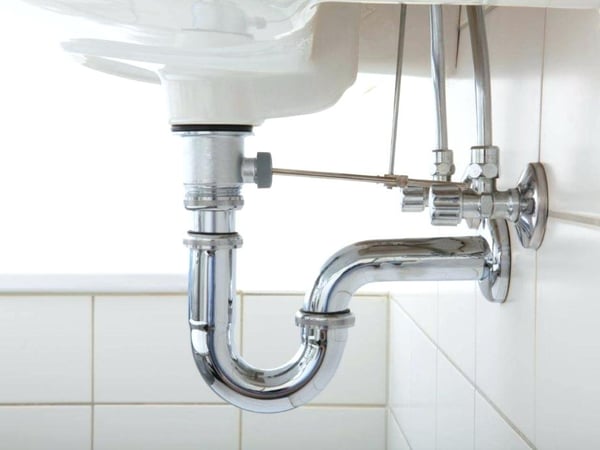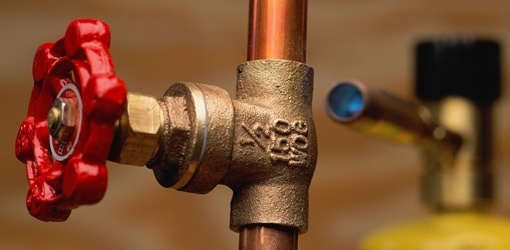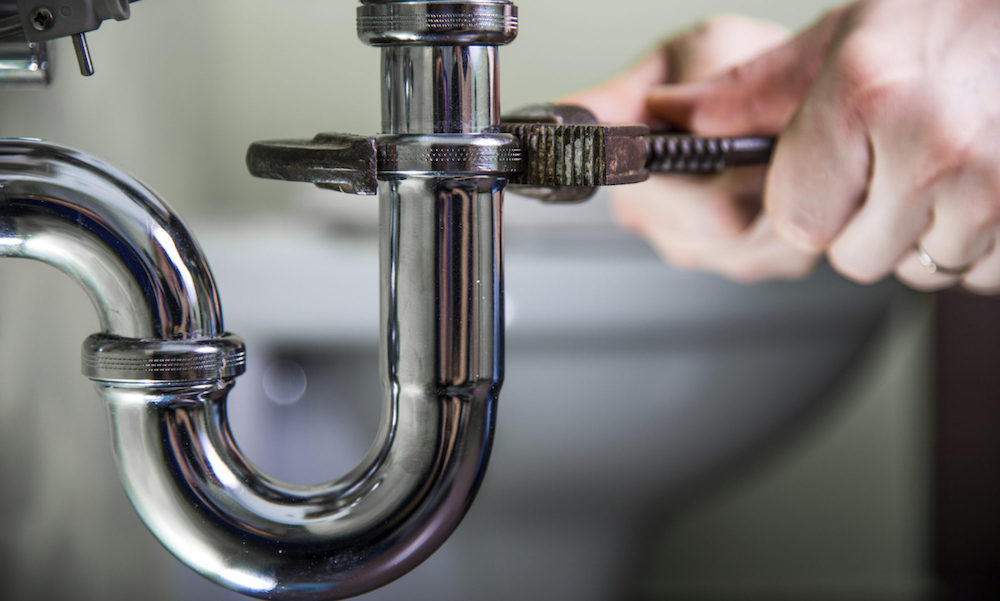Home plumbing is likely something you don’t think about much. That is, unless you have a leak or other plumbing problem that requires attention in your home. To stay ahead of the game, there are several basic plumbing tips that are important for every homeowner to know.
Check out five tricks of the trade for home plumbing below:

If you can’t cut a pipe…
When you can’t cut a pipe, reheat solder to sever it. While the best way to disconnect a soldered pipe is to cut it, sometime that just doesn’t work. If you can’t cut a pipe, heat the joint and pull off the fitting as the solder melts, Family Handy Man recommends.
While reheating the solder, have a wet rag on hand and use it to wipe away the molten solder immediately so it doesn’t harden. For this plumbing tip, make sure you wear gloves so you don’t burn your fingers during the process. Although the pipe may be ready for a new fitting after a quick wipe, more often than not you’ll have to scour off excess solder. To do this, use sandpaper or emery cloth.

If you want to cut PVC pipe…
It’s plumbing basic to know how to cut PVC pipe. You have a couple options when it comes to cutting this pipe. First, you can use a hacksaw. Begin by clamping the pipe into place with a vice, and then mark the pipe where you need to cut it.
Place the hacksaw on the mark you made and seat the teeth into the pipe. Make sure to hold the handle firmly while you use your other hand to push down on top of the saw and seat the teeth into the pipe.
Next, you can use a pipe cutter to cut the PVC pipe. Begin by getting a plastic cutter and placing the pipe into the crescent moon shaped lower part of the cutter, WikiHow suggest. Then, ratchet the blade onto the pipe and squeeze the hand-grip trigger on the handle. This will extend the blade and cut the pipe.
Lastly, you can cut the pipe using a miter saw. WikiHow suggests using a miter box and saw for more specific cuts. First, place the PVC pipe you need to cut under the blade where you want to sever it.

If a shutoff valve won’t work…
You can find shutoff valves under sinks and toilets, and they’re known to be somewhat unreliable. In some cases, the shutoff valves won’t completely close while in other cases, they won’t close at all. As an alternative to replace the shutoff if either situation happens, use “piggyback” shutoff valves. You can find these at most home centre stores, and they connect to the existing shutoffs.
Simply disconnect the supply line and install the new valve, Family Handy Man says, recommending that using a new supply line is beneficial as well. According to Family Handy Man, if the old shutoff closes most of the way, you won’t have to shut off the main water valve. Instead, just put a container under the valve to catch any water that drips while you work.

If a pipe freezes…
Don’t panic if you found a pipe has frozen. Thawing a frozen pipe quickly and correctly are both important in the process of fixing a frozen pipe. First, you’ll need to find the pipe that’s frozen. To do this, turn simply on the bathroom and kitchen faucets to check. The faucet that only slightly trickles or doesn’t allow any water at all is likely the frozen pipe.
Before thawing the frozen pipe, open the faucet that the pipe feeds water into, The Balance suggests. Be sure to open both the hot handle and the cold handle. Next, to begin the thawing process, start near the faucet then work your way down the pipe to the blockage. To thaw frozen pipes, check out the methods The Balance suggests below:
- Hair dryer: use a hair dryer to thaw a pipe by turning on the dryer and pointing it at the pipe.
- Heat lamp: You can use either a heat lamp or a portable space heater and position the device toward the frozen pipe.
- Hot towels: Wrapping hot towels can help to slowly thaw the blockage. Simply, dip a towel in hot water and wrap the pipe with it.
- Electric heating tape: By applying electric heating tape directly to the frozen pipe, you’ll be able to distribute heat throughout the pipe, thawing it.

If you need emergency plumbing…
If you find yourself with an emergency plumbing problem, call a plumber to handle the job. In addition to calling an experienced plumber, you can also follow the plumbing tips below:
- Know where the main water shut-off valve is.
- Know how to turn off your water heater. Note: If it’s a gas water heater, turn the switch to the “pilot,” DIY Network recommends.
- Take note of isolation valves, which are located at each fixture and will stop the flow of water to that location. According to DIY Network, these valves allow water to continue to service the rest of the house if a leak is being repaired somewhere.
- If you find a broken supply tube causing a leak, screw a blind cap on the seal the link temporarily until it can be fixed.
Now you have the plumbing basics you need as a homeowner. Next, stop by a Kitchen & Bath Classics showroom for faucets, showerheads, and everything you may need.




